Microsoft Graph does not support any actions itself. It serves only as a general connection that can be used across all Microsoft Graph integrations for extra convenience.
Creating a Microsoft Graph connection
To reduce the number of scopes, we recommend using separate connections for each of the following integrations rather than the general Microsoft Graph connection.
- Microsoft Entra ID
- Microsoft Defender XDR
- Microsoft Teams
- SharePoint
- OneDrive
- Microsoft Outlook
- Microsoft Intune
- Microsoft Excel
- Microsoft E-Discovery
- Microsoft OneNote
Using OAuth
Creating your connection
- In the Blink platform, navigate to the Connections page > Add connection. A New Connection dialog box opens displaying icons of external service providers available.
- Select the Microsoft Graph icon. A dialog box with name of the connection and connection methods appear.
- (Optional) Edit the name of the connection. At a later stage you cannot edit the name.
- Click Microsoft Graph to authenticate using OAuth.
- Sign in using your credentials.
Need admin approval? please refer to the Need Admin
Approval guide.
Using App Registration
To create the connection you need:- A client ID
- A client secret
- A tenant ID
Obtaining the credentials
- Log into the Azure Portal.
-
Go to the Microsoft Entra ID resource.

-
In the left-hand menu, click App registrations.
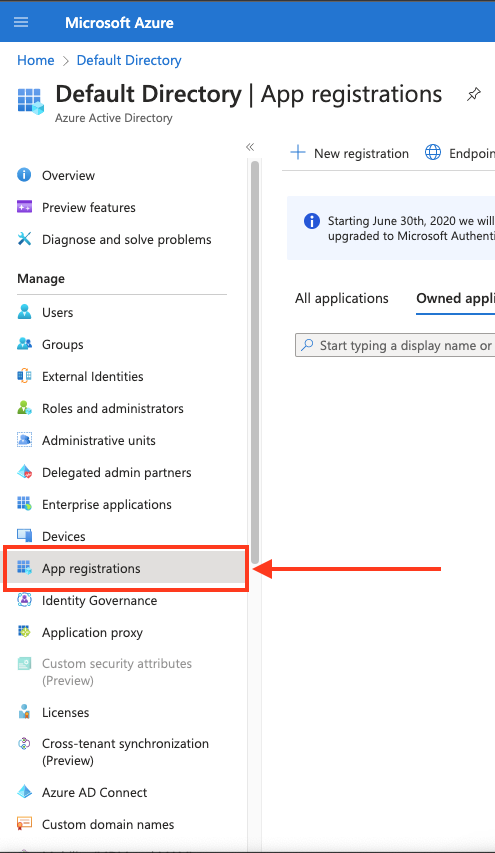
-
Create a new application registration or click on one of your existing applications.

-
In the left-hand menu, click API permissions.
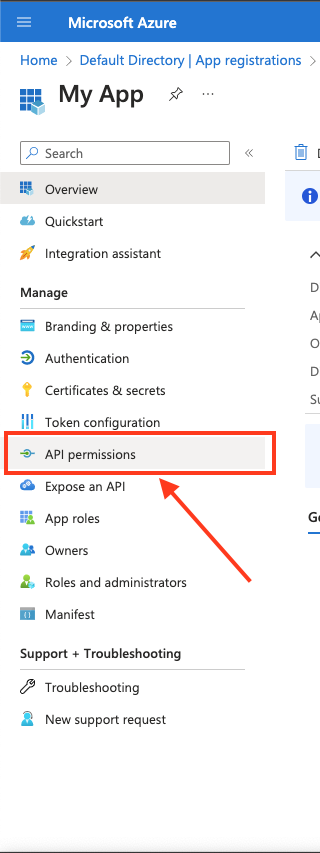
-
Click Add a permission and select Microsoft Graph.
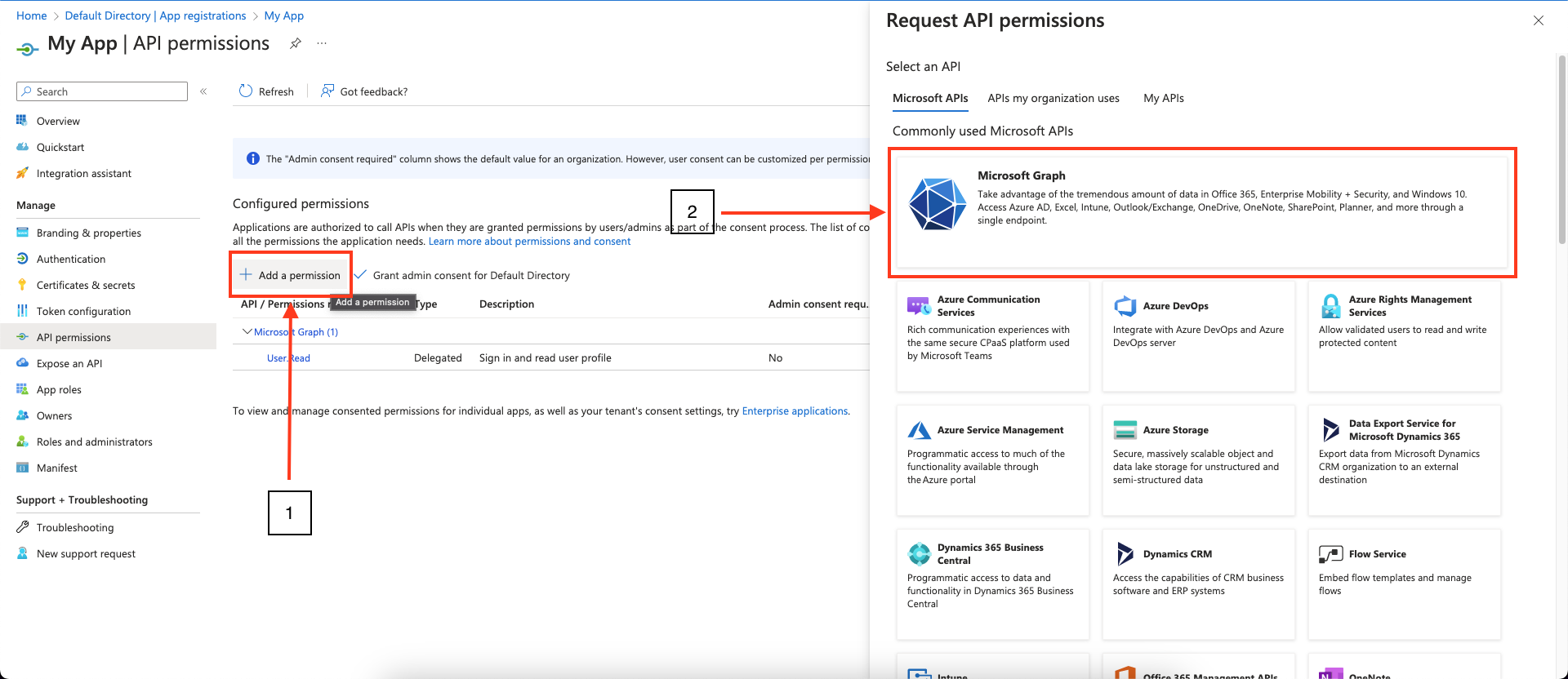
-
Choose Application permissions and mark the permissions you wish to add.
 You can adjust the permissions according to your requirements.Ensure that the permissions configured in your app registration align with those required by the actions you wish to perform with Blink. Remember, having a high-level permission does not automatically grant access to its subordinate permissions.
You can adjust the permissions according to your requirements.Ensure that the permissions configured in your app registration align with those required by the actions you wish to perform with Blink. Remember, having a high-level permission does not automatically grant access to its subordinate permissions. - Click Add permissions to save the changes.
-
Click Grant admin consent for
<your tenant>on the API permissions page. Only admins can grant consent.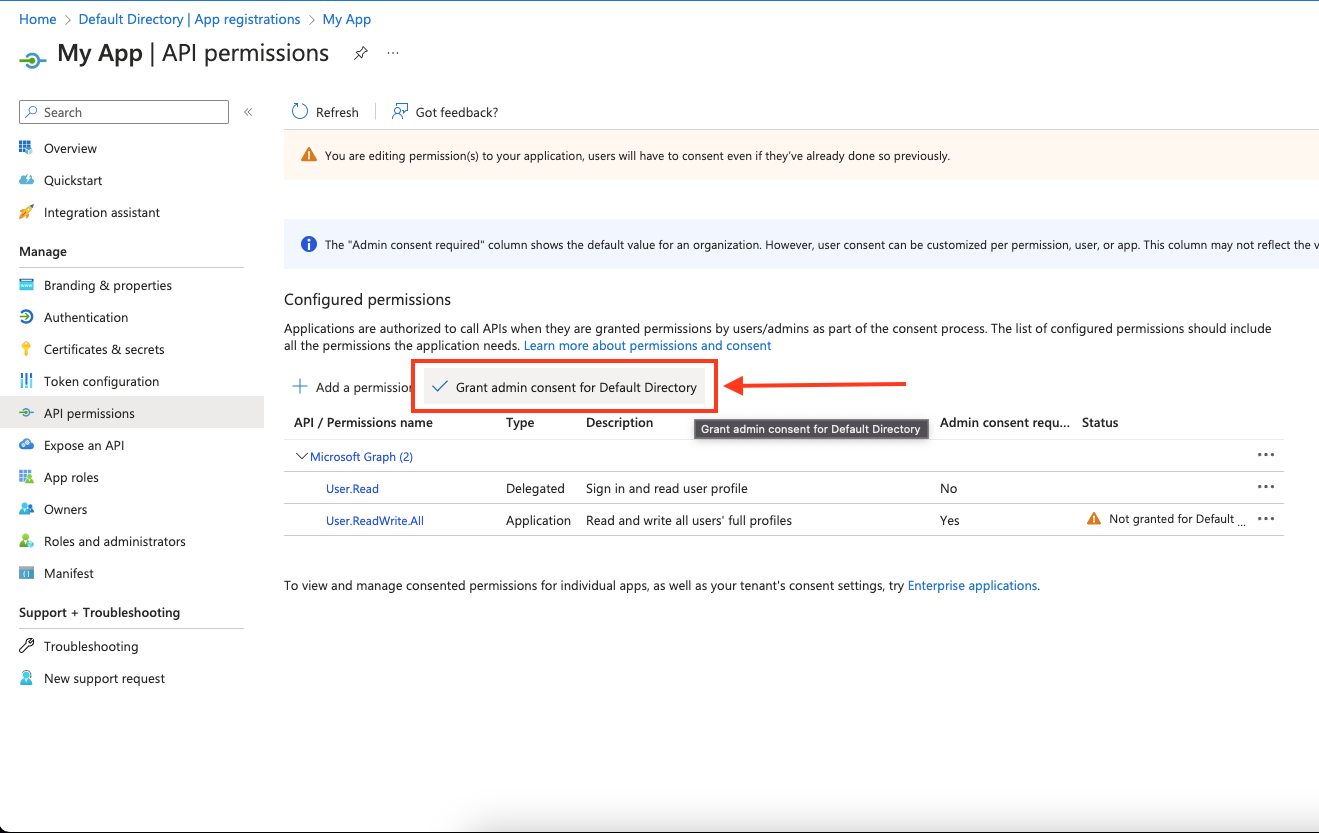
-
Navigate to Overview and Copy your client ID and tenant ID.
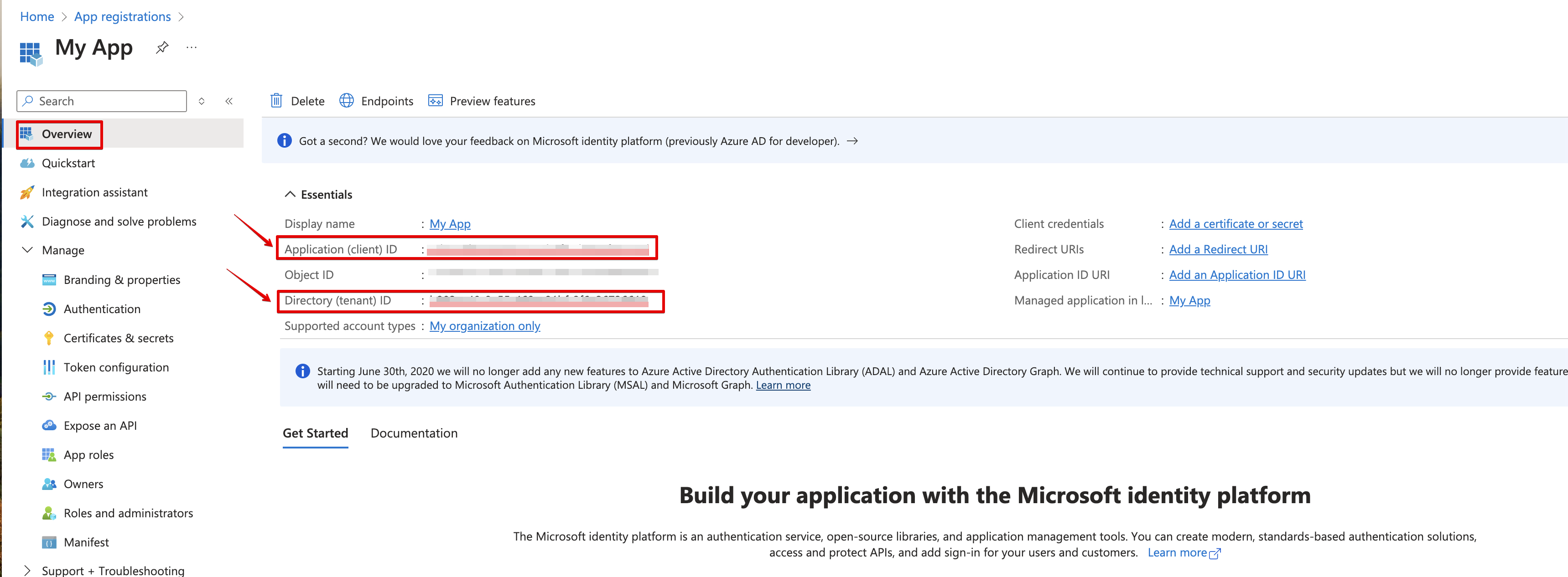
-
Create a new client secret.
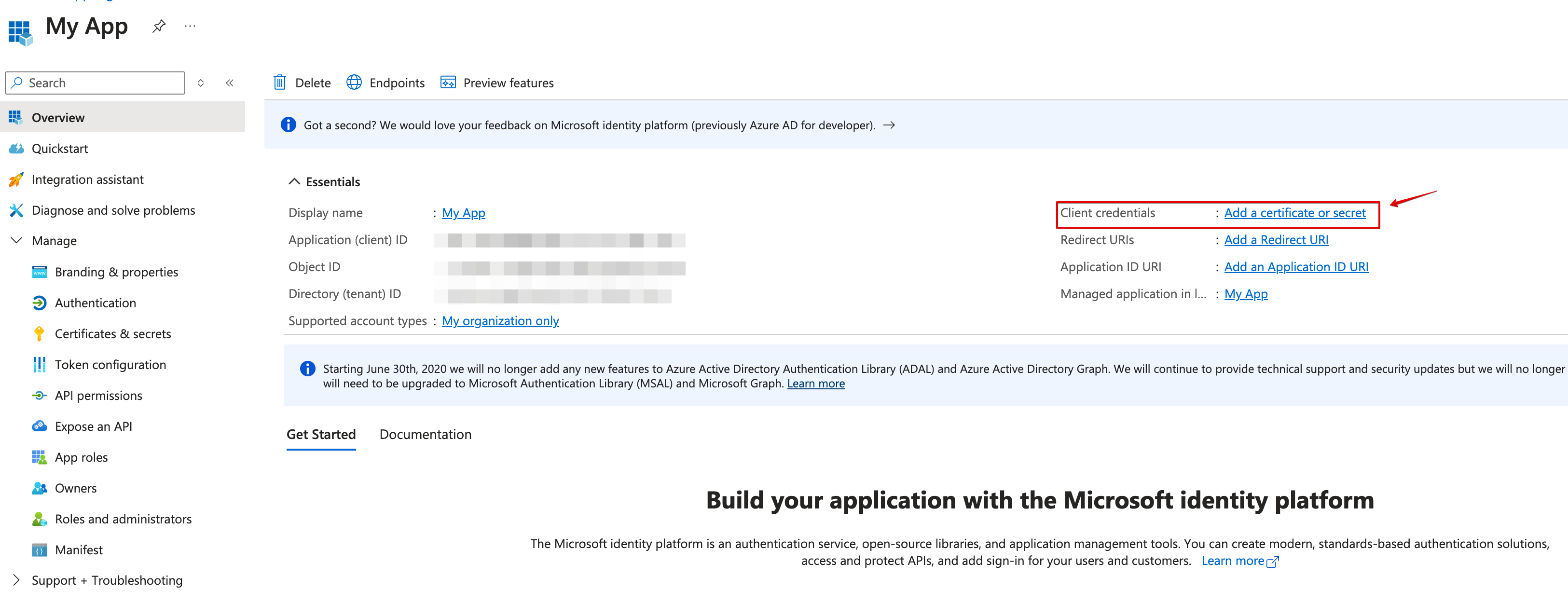
-
Copy the secret value.
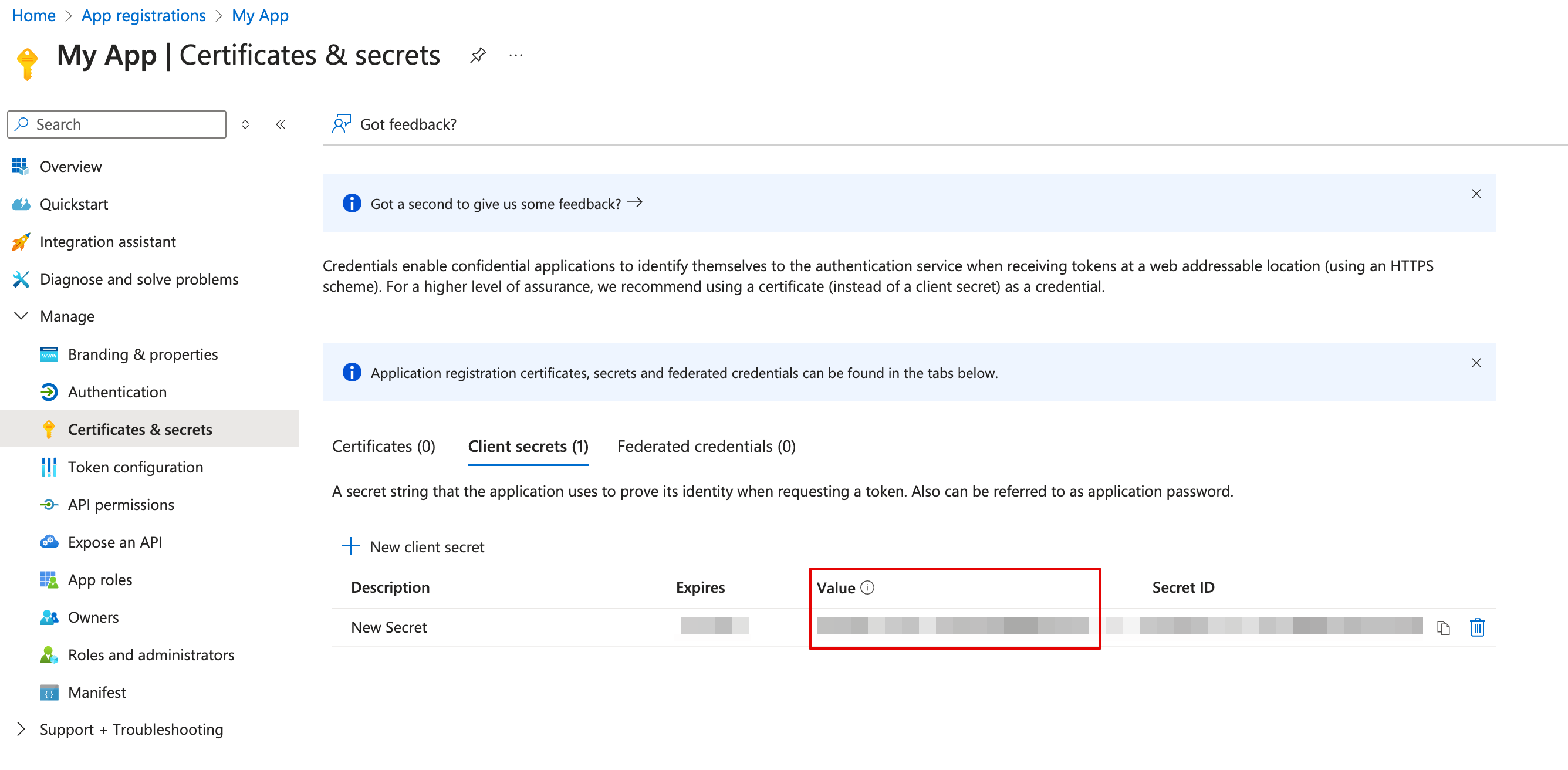
Creating your connection
- In the Blink platform, navigate to the Connections page > Add connection. A New Connection dialog box opens displaying icons of external service providers available.
- Select the Microsoft Graph icon. A dialog box with name of the connection and connection methods appear.
- (Optional) Edit the name of the connection. At a later stage you cannot edit the name.
- Select App Registration as the method to create the connection.
-
Fill in the parameters:
- The Client ID
- The Client Secret
- The Tenant ID
- (Optional) Click Test Connection to test it.
- Click Create connection. The new connection appears on the Connections page.